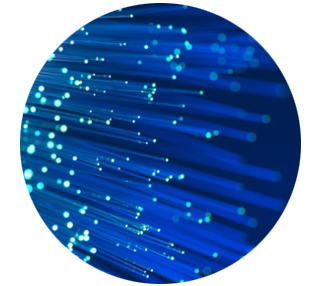 Remember copper cables? Oh yeah, they used to be all the rage. For years, they were considered a preferable business choice for distributing data. Only until recently did that change. Our old friend unfortunately reached its maximum potential, literally.
Remember copper cables? Oh yeah, they used to be all the rage. For years, they were considered a preferable business choice for distributing data. Only until recently did that change. Our old friend unfortunately reached its maximum potential, literally.
Significant distance limitations were exposed in copper cabling systems once the world went wireless. When copper tries to send signals any farther than 100 meters away, the speed slows down, the signal degrades, and the connection is disrupted.
Thankfully, fiber cables can go the distance. With excellent signal integrity, fiber steps in for copper when it's a matter of long-distance data transmission.
The question is, once a customer has determined that fiber cables are the best way to go, what's the next step? To benefit the decision process, Belden breaks down the most important things to consider about the two main types of fiber, singlemode and multimode.

The Differences Between Singlemode and Multimode Fiber
The biggest difference has to do with light. Known as light propagation, the means of which light is carried across fiber differentiates singlemode and multimode systems. Singlemode fiber, for example, only carries one mode of light at a time, while multimode fiber carries multiple modes of light at once.
In addition to light propagation, it's essential to weigh in factors such as:
- Signal Distance
Signal distance refers to how far the data signals need to travel within any given facility. Multimode fiber cable excels across short distances, while singlemode fiber is made to perform at longer distances. - Cost Requirements
To understand the differences in material costs is critical. While singlemode cables have historically been the more cost-effective option, compatible electronics like receivers, transceivers, and transmitters are more expensive; however, modern hyperscale data centers are driving the costs down and making products more affordable to contractors, integrators, and end-users. When it comes to multimode systems, the exact opposite is true. Long story short, it is important to consider cost and functionality together. - Bandwidth Requirements
Bandwidth is measured by how much information a facility must distribute at a time. While multimode fiber systems do support higher bandwidth than copper systems, singlemode fiber systems provide the most bandwidth potential. The reason for this goes back to light - singlemode fiber experiences less modal dispersion. In other words, as signaling bandwidth increases, multimode fiber can be impeded by distortion, impacting signal integrity. - Future-Proofing the Network
When designing a fiber network, it is important to consider future requirements in addition to current-day ones. Questions may come to mind, like: Will there be more locations? Will bandwidth requirements increase?
Unfortunately, singlemode and multimode fiber can’t just be spliced together or interchanged. Doing so will only result in data loss that can prevent your network from operating. Make smart decisions today, so that updates and expansion will be easier tomorrow.

Learn More Fiber Basics
Watch Belden’s Demystifying Fiber Cabling Systems webinar on demand to learn more about the basics of fiber optic cabling systems. This information will become critical to customers as fiber is used more and more to support new connectivity demands and bandwidth-intensive technologies.
Interested in learning how Belden can support your upcoming fiber projects? Read the full blog post, or contact an Accu-Tech Representative to learn more.



.png?width=58&height=58&name=X_logo_2023_(white).png)
